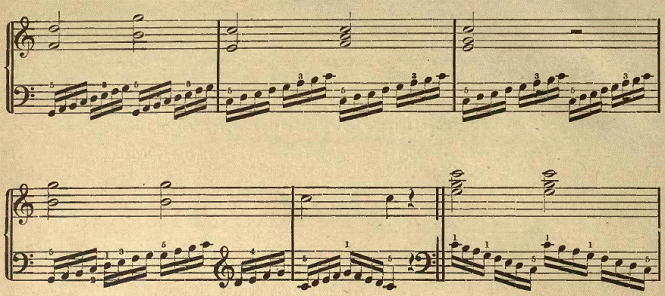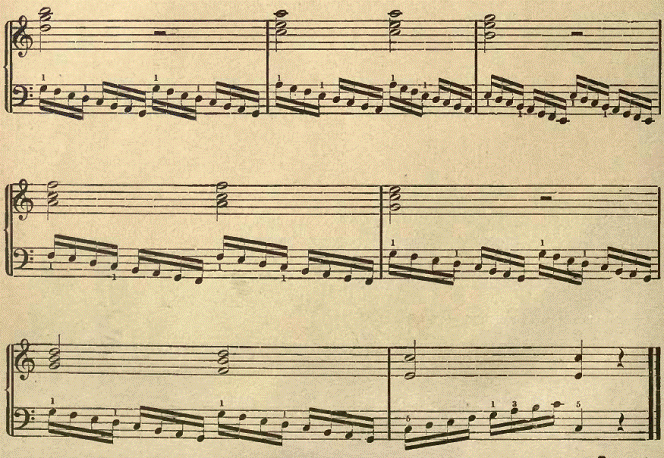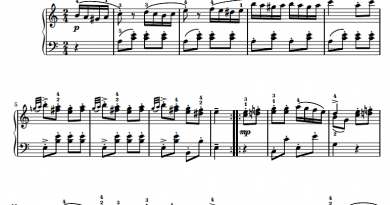Music scales and intervals for piano theory
Three kinds of scales are recognized in music, namely, the diatonic, the chromatic, and enharmonic. Only the first two are practically used. The diatonic scale has two modes, to wit: major and minor. We have thus far only used the major scale.
There are in all twenty-four major and twenty-four minor scales; practically we use, however, only twelve of either mode.
The names of the scales used are
- Major: C G D A E B F# Gb Db Ab Eb Bb F
- Minor: A E B F# C# G D# or Eb Bb F G D
Of course, in the above enumeration F# and Gb major are regarded as the same; so also D# and Eb minor, hence they are only counted as one.
The distance from one tone to another is called an Interval. When starting a scale in C, we call C the keynote, because it is the tone from which we start out and the tone to which we return. In other words, it is the principal tone; it is the beginning and the ending.

Intervals and the degrees of a music scale
From C to C there is no distance, this is called a prime; from C to D is a second, and D is so called because it is the second tone from C. For the same reason from C to E is a third, which is also often called the Mediant. From C to F is the fourth, generally called the sub-(or lower) dominant. From C to G is the fifth, always called the Dominant. From C to A is the sixth, from C to B is the seventh. B is called the leading tone. From to C the eighth or octave. The Third, Fourth, Fifth and Octave are the most important intervals. All intervals represented above au Major. By making them a half step smaller, they become Minor.
The following represents Minor intervals:
![]()
The major Fourth, Fifth, and Sixth are often called perfect Fourth, Fifth and Sixth
Half and whole steps in a major scale
When examining the scale of C, we find that it consists of two equal halves. They are exactly alike, each having a half step

while all other intervals consist of whole steps. There are, therefore, two half steps in the C major scale, namely, between the 3th and 4th, and the 7th and 8th, while whole steps are found between the 1st and 2d, the 2d and 3d, the 4th and 5th, the 5th and 6th, and between the 6th and 7th.
Bear in mind the fact that all major scales are built like the C major scale, and in order to make them conform to this model, sharps and flats must be introduced. The pupil must now study the subject of scales, in the lessons on harmony attached to this book.
Scales in one octave played with the left hand on the piano
Etude: an exercise for beginning to study the major and minor scales with the left hand on piano.





